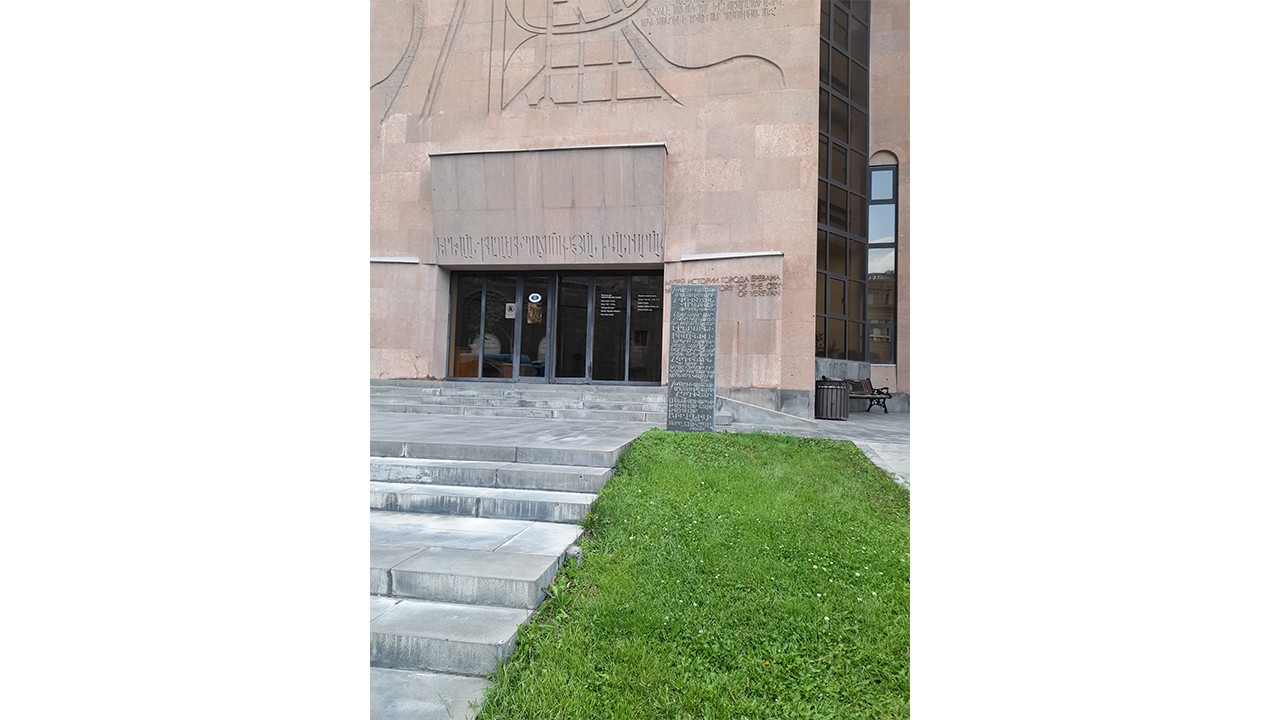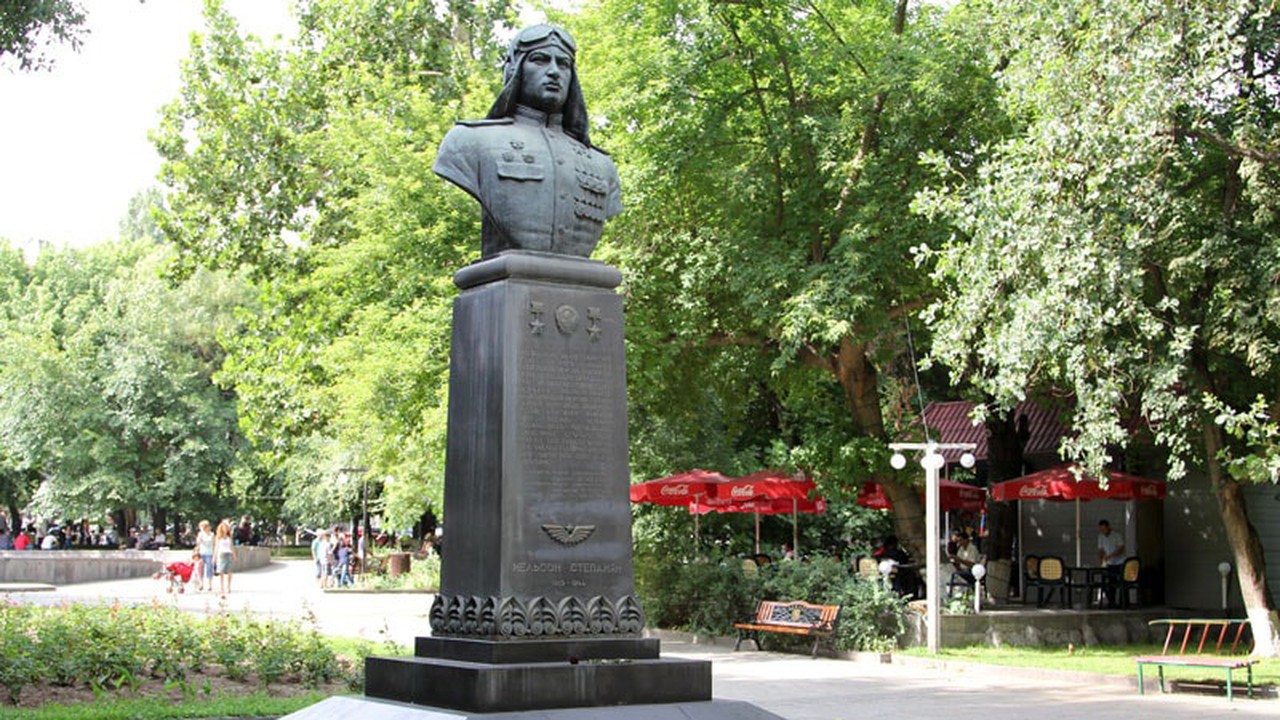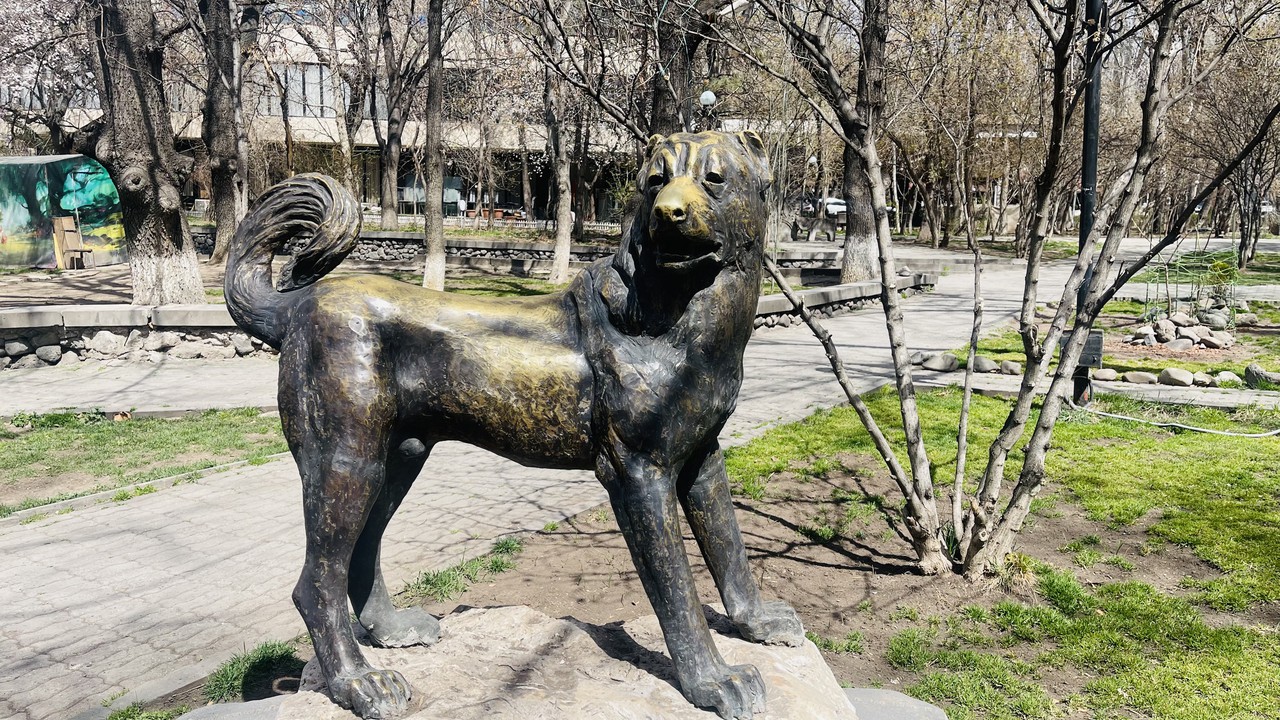MONUMENTS

COPY OF THE CUNEIFORM INSCRIPTION OF THE FOUNDATION OF EREBUNI-YEREVAN CITY
1968
The capital of Armenia, Yerevan, is among the oldest cities in the world, predating even the famed city of Rome. However, few ancient cities have their "birth certificates." Yerevan is one of the exceptions.
In the autumn of 1950, during excavations on Arin Berd Hill in the southeastern part of the city, led by architect Kostandin Hovhannisyan, a cuneiform inscription from King Argishti I (786-764 BC) of the Kingdom of Van (Biaynili) was discovered. This inscription documents the founding of the Erebuni fortress. The inscription exists in four copies, all considered original: one remains at the archaeological site, two are housed in the Erebuni Museum, and the fourth is in the State History Museum of Armenia.
The cuneiform inscription mentioning the name Erebuni serves as the written "birth certificate" of the Armenian capital, providing indisputable proof that Yerevan is the direct successor of Erebuni and marking the beginning of Yerevan's recorded history.
King Argishti I constructed the fortress in the heart of the Ararat Plain, in a previously uninhabited area, in the fifth year of his reign, 782 BC. This fortress was built to strengthen the land of Biaynili and intimidate enemies, with 6,600 soldiers stationed there. Erebuni played a crucial strategic role in bolstering the Kingdom of Van's position in the Ararat Plain and the northeastern regions of the Armenian Highlands, and it served as a significant administrative and religious center.
In October 1968, the Armenian people celebrated the 2750th anniversary of the founding of Erebuni-Yerevan with great fanfare. The city marked this occasion with numerous new constructions, newly opened museums, 2,750 fountains symbolizing the anniversary, and the reconstruction of a park (formerly Stepan Shahumyan Boulevard, redesigned by architect Liparit Sadoyan). During the celebration, a copy of King Argishti I’s cuneiform inscription was also created as part of a monument intended for placement near the fountains, designed by architect Hovhannes Hakobyan. However, the copy was not installed in the park but was instead placed at the corner of Nalbandyan and Melik-Adamyan Streets.
In 2005, the cuneiform copy was relocated and installed in front of the newly built Yerevan History Museum, to the left of the entrance, on the lawn. To the right of the entrance, a stone with the Armenian translation of the inscription was erected.
The cuneiform copy is engraved on the smoothed surface of a massive, single piece of gray basalt, comprising 13 lines of text.
“Scientific Research Centre of Historical and Cultural Heritage” SNCO
Yerevan Municipality
In front of the Yerevan History Museum building


